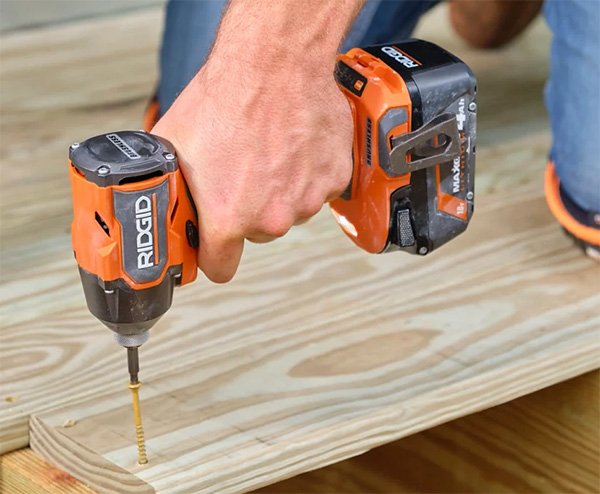
If you buy something through our links, ToolGuyd might earn an affiliate commission.
I just read a “Best impact drivers of 2023” post that came across my news feed, and it was terrible, and that’s the mildest way to describe it.
Shown above is an example of a typical impact driver, a Ridgid 18V model. It’s not directly related to the story, but I think it’s a reasonable featured image for an impact driver story.
With the “best impact driver” buying guide that hit my news feed, their featured image had an impact wrench, cordless drill, and Milwaukee Surge oil impulse driver.
This is typical for shallow buying guides written by mass media “shopping experts” these days, where a best cordless drill buying guide might show an impact driver, and an impact driver might show a cordless drill.
Here are the categories they featured:
- Best overall
- Best for pros
- Best cordless
- Best combo
- Best budget
What does “best cordless” mean, in an article that exclusively features cordless impact drivers?
They ranked a Makita XWT15T impact wrench as the “best for pros” pick, describing it as a impact drive [sic] kit that delivers 1600 pounds [sic] of torque and weighs 2.5 lbs.
This Makita impact wrench model actually delivers 240 ft lbs of torque, which is 2880 in-lbs of torque, and weighs 4.0 lbs with battery. It’s also an impact wrench, not an impact driver.
The article uses “pounds” as the unit for torque throughout the buying guide. Not inch-pounds or foot-pounds, just “pounds.”
When answering the question of “what is the most powerful impact driver,” the magazine says:
the Dewalt 20V Max Atomic impact driver produces more torque than any other impact driver on the market.
The model they were referencing delivers 1700 in-lbs of max torque, and is definitely not the most powerful impact driver on the market.
Milwaukee’s M18 Fuel impact driver – sold by itself, in a kit, and in a combo kit (promo at Home Depot) – delivers 2000 in-lbs max torque. The Flex FX1351 impact delivers 1800 in-lbs max torque. The Makita XGT GDT01D delivers 1950 in-lbs max torque. The Dewalt DCF850 and DCF845 both deliver 1825 in-lbs max torque.
They said in a Q&A that impact drivers require hex bits, which is true, but don’t mention anything about the bits needing to be impact-rated.
They also say:
A brushless motor runs faster and lasts longer than an impact driver with a standard motor.
This is not always true. There are many instances of brushed motor tools delivering more power and faster speeds than many brushless motors.
A cordless tool can be very well made, but if the battery isn’t strong, it won’t produce enough power or last long enough to be useful.
No… impact drivers generally aren’t very power-hungry, and as such batteries don’t have to be “strong.”
Statements like those could be true, but don’t make much real-world sense. I guess that’s what happens when magazines write for SEO bots instead of actual people.
The magazine also discusses how 18V and 20V batteries have “the same peak power and battery life.” What?
I make mistakes and can cut other publications some slack.
But in this case, the author – I can’t even call them a reviewer as it’s not clear whether they’ve ever used any impact driver before – demonstrated extremely poor proficiency with the subject matter, and the magazine failed to catch numerous technical errors, inaccuracies, fallacies, and falsities.
What happened to fact-checking?!






